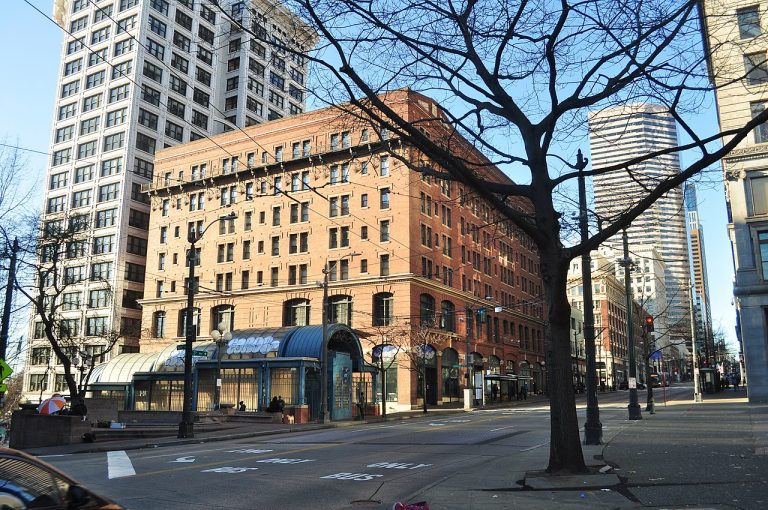Published on December 23, 2020

Originally written by Daniel Malone for The Seattle Times.
Forty-one years ago, the Downtown Emergency Service Center (DESC) opened a large disaster-style homeless shelter in the former ballrooms of the Morrison Hotel in downtown Seattle.
Every single night since, the Morrison shelter provided refuge to approximately 250 of Seattle’s most vulnerable people. That is until April 9, when COVID-19 shut it down. When there’s a deadly pandemic stalking the land, it’s no longer possible to crowd hundreds of people together, some elderly and many with complex medical problems and mental-health conditions.
In some ways, the closure was a relief. A congregate shelter environment can be deeply stressful for people already living with immense personal suffering and uncertainty. It’s also a perfect environment for a virus to spread.
For years, research has shown that the answer to homelessness is housing. But there’s never been enough housing — nor the political or public will to support it. This pandemic has forced the issue about the kinds of places we make available to people without housing.
Under pressure to move people out of the shelter at the Morrison, King County rented an unoccupied Red Lion in Renton, and we moved 200 of our clients there. For the first time in many of their memories, each resident had a room and bathroom of their own. Almost overnight, people’s lives improved. Research by University of Washington faculty Gregg Colburn and Rachel Fyall found that the shift from shelters to hotels in King County has increased feelings of stability, improved health and well-being, reduced conflicts and lowered volumes of 911 calls. It has also increased rates of transition to permanent housing. And as for COVID-19: No outbreaks in this environment.
Behavioral-health disabilities such as mental illness and addiction don’t suddenly vanish when people have somewhere to stay, but without the intense stress of homelessness and inappropriate living situations, research shows improvements become much more likely. We owe it to these vulnerable community members not to revert to the old way of squeezing people into crowded environments.
Originally written by Daniel Malone for The Seattle Times.